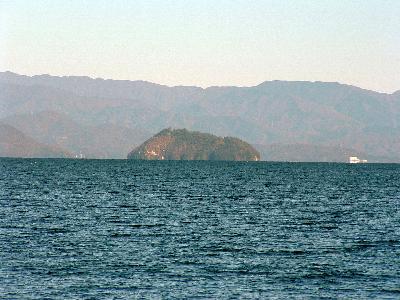|
Toyoma Shinryoku Takigi-Noh is the Noh play put on outdoors with light supplied by bonfires. It is performed in the middle of June every year at Mori Butai, the Noh theater and museum, in Toyoma Town in Tome City, Miyagi Prefecture.
When the bonfires placed on the white sand ground around the stage are lit all at once at 5:00 in the evening, the Noh stage appears out of the darkness. For the following three hours, the elegant Noh plays on the stage together with the sound and smell of burning torches transport spectators somewhere ethereal.
During the Edo period, Noh was considered to be important as Shikigaku (music and dances performed at official occasions) of the warrior class. In the Sendai domain, too, it was given protection and encouragement by the successive domain lords including Date Masamune.
In the territory of the Toyoma-Date family, who followed the formalities of the Date clan, Noh was also extensively practiced and handed down by the warrior class. After the abolition of clans in the Meiji period (1868-1912), the warriors who handed down Noh plays became farmers, which resulted in Noh becoming widespread among townspeople and being inherited in Toyoma Town as Toyoma-Noh.
Toyoma-Noh has been handed down by Toyoma Yokyokukai (Toyoma Noh Chant Society) since 1908. Although they are amateur performers, they keep the tradition with extremely high level of performance that can be compared with professional Noh players. Toyoma-Noh was prefecturally designated as an intangible folk cultural property and it still enjoys wide popularity among people inside and outside the prefecture.
When the bonfires placed on the white sand ground around the stage are lit all at once at 5:00 in the evening, the Noh stage appears out of the darkness. For the following three hours, the elegant Noh plays on the stage together with the sound and smell of burning torches transport spectators somewhere ethereal.
During the Edo period, Noh was considered to be important as Shikigaku (music and dances performed at official occasions) of the warrior class. In the Sendai domain, too, it was given protection and encouragement by the successive domain lords including Date Masamune.
In the territory of the Toyoma-Date family, who followed the formalities of the Date clan, Noh was also extensively practiced and handed down by the warrior class. After the abolition of clans in the Meiji period (1868-1912), the warriors who handed down Noh plays became farmers, which resulted in Noh becoming widespread among townspeople and being inherited in Toyoma Town as Toyoma-Noh.
Toyoma-Noh has been handed down by Toyoma Yokyokukai (Toyoma Noh Chant Society) since 1908. Although they are amateur performers, they keep the tradition with extremely high level of performance that can be compared with professional Noh players. Toyoma-Noh was prefecturally designated as an intangible folk cultural property and it still enjoys wide popularity among people inside and outside the prefecture.
| [+ADDRESS] | 
|



















